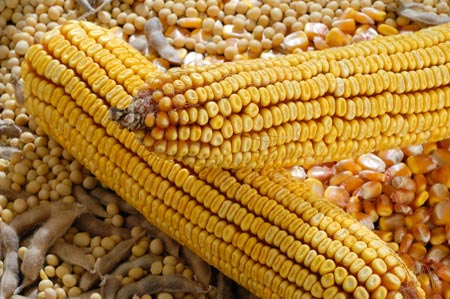 (Bloomberg) – Soybean imports to China, the world’s biggest buyer, climbed to the highest in four months as demand for the livestock feed ingredient started recovering at a time when Brazilian shipments increased.
(Bloomberg) – Soybean imports to China, the world’s biggest buyer, climbed to the highest in four months as demand for the livestock feed ingredient started recovering at a time when Brazilian shipments increased.
Imports were 6.5 million metric tons in April, compared with 4.6 million tons in March and 4 million tons a year earlier, according to customs data released today. Shipments into the country in the first four months climbed 41 percent to 22 million tons from a year ago, the data show.
Improving demand from China may help boost futures in Chicago that have advanced 12 percent this year. Animal-feed consumption in the country has begun to recover from a bearish first quarter, when concerns over the H7N9 avian flu virus caused poultry producers to curb inventories, according to Monica Tu, an analyst at Shanghai JC Intelligence Co. Monthly purchases may exceed 6 million tons in May and June, Tu said.
“Losses on processing soybeans have narrowed from the first quarter, so the relatively large amount of shipments aren’t going to create a glut,” Tu said by phone from Shanghai.
Soybeans for delivery in July on the Chicago Board of Trade climbed 0.5 percent to $14.5325 a bushel by 1:54 p.m. Beijing time. Soymeal futures for September delivery on Dalian Commodity Exchange gained 0.5 percent to 3,609 ($580) yuan a ton.
Guangdong Haid Group Co., the largest maker of animal feed from China’s southern Guangdong province, last month said poultry prices are rebounding.
China bought 29 million tons of soybeans from Brazil, its biggest supplier of the oilseed, in the marketing year that ended Sept. 30, Chinese customs data show. The bulk of Brazilian beans were shipped to the Asian nation from April to November, the data show. The U.S. follows Brazil, supplying 22 million tons, according to the customs data.
As of April 24, China’s imports of U.S. soybeans totaled 28 million tons for the marketing year that started Sept. 1, compared with 21 million tons a year ago, according to data by the U.S. Department of Agriculture.




